Beaumaris, Anglesey, Wales
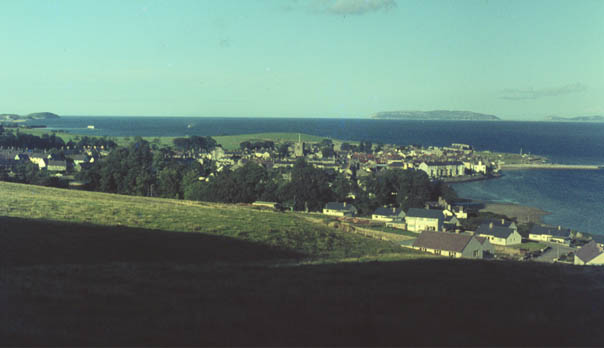
This is a view of Beaumaris from one of our favorite hiking locations. Across the Menai Strait you can see the Great Orme Head, which is a the northwest tip of the mainland of Wales.
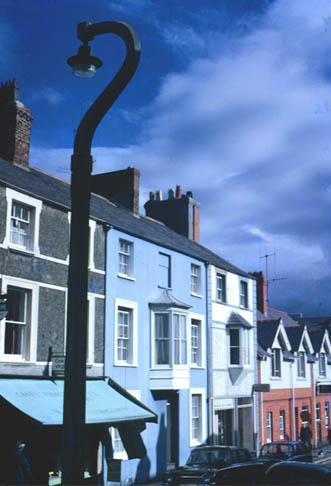 | We lived in the third floor "flat" of the Old Bank House, the blue attached house in the center of the photograph. Almost all the houses are named; this one for the fact that the first floor one housed the bank. Professor John Sheridan has managed to arrange this rental for us in the house of Mrs. Parry. She was an elegant, white-haired English lady. In the view of Beaumaris above, you can see the square Norman church tower in the center of town. The Old Bank House was just across the street and a few doors down. Professor John Sheridan, for whom Rod worked, lived in Beaumaris. We were grateful to him for finding us a place there. It was a very pleasant place to live in and explore from. |
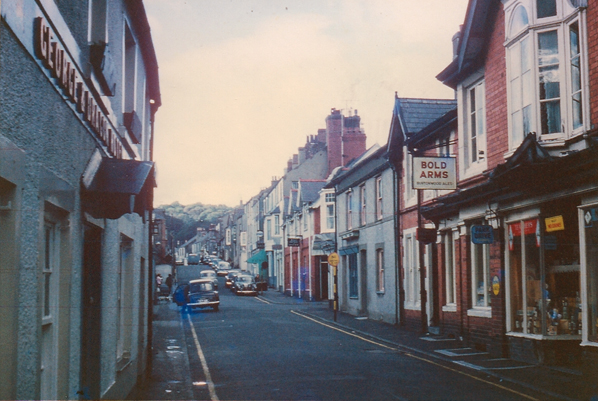
This is Church Street, the central street in Beaumaris. Our house is on the right, just where the first car is parked on the right. Church Street continues directly up the hill when you leave the pier.

This view of Beaumaris from a location on one of our walks above the town shows the pier leading out into the Menai Strait. From that pier you can walk straight up Church Street ot our house. We enjoyed being only about three blocks from the pier and would walk down often to watch the gulls and other sea birds.
Beaumaris had managed to accumulate about 1500 residents in its 700 year history, so it left plenty of open country around it to explore.
 We knew very little about Wales when the opportunity for Rod's post-doc arose. And now we found ourselves settling in this small village on the island of Anglesey, off the coast of North Wales. |
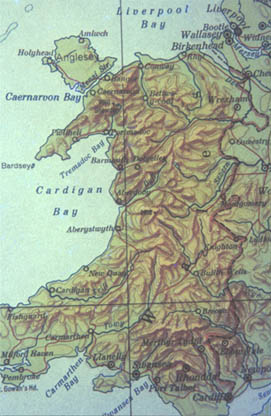 |
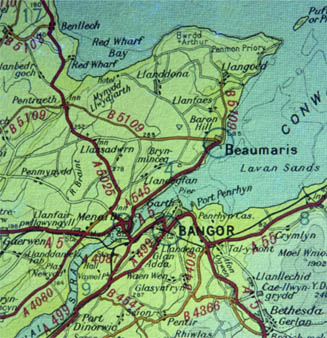 |
The route from Beaumaris south and across the Menai Bridge into Bangor was our daily work routine. It was a real blessing to drive along the Menai Strait and see the water, the boats, and the mountains across the Strait on the mainland. Rod drove in to the Chemistry building of the University College of North Wales to his laboratory, dropping Brenda off at the Caernarvonshire and Anglesey General Hospital for her work as a nurse in the hospital when their time schedules were compatible. Other times Brenda rode the bus from Beaumaris. Sometimes Rod would stay late and pick Brenda up when she worked until 7 pm. |

Rod watched these guys for months as he drove back and forth to work along the Beaumaris-to-Bangor road. The work was extremely slow, and these masons were never in a hurry.

At home they would have thrown something up in a week, maximum. But then this wall will probably last four hundred years! The perception of time was quite different in Wales.
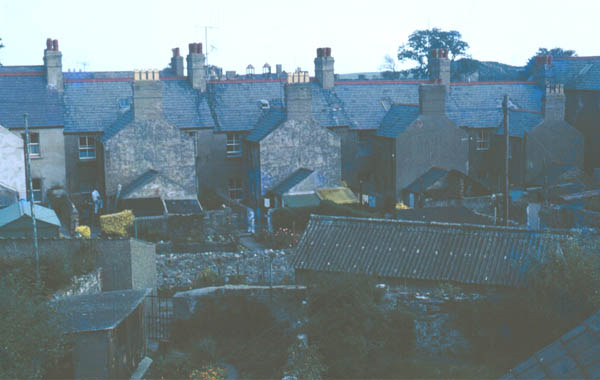
The view out the back window of our flat included small rock-walled gardens. They used the word "garden" for any outside patch of vegetation, be it a small patch of grass or an elaborate formal flower garden. We initially assumed that the word garden meant vegetables, so we were always looking for the rows of vegetables - until we were educated to their terminology. The substantial houses formed a continuous row, called "attached houses" when they were speaking precisely. But attached houses were the norm, so when they said house, you could assume that they meant attached houses. They used the term "detached house" regularly for houses which did not share any walls with another. Duplexes were called "semidetached houses".
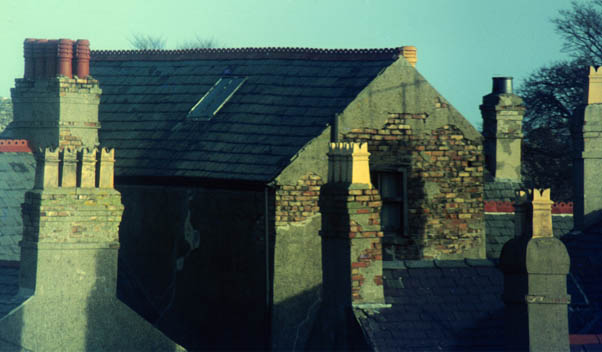
The individual flues in the chimneys were interesting to us. They called them "chimney pots", and commonly there was a chimney pot for each room in the house. Historically they heated with coal.
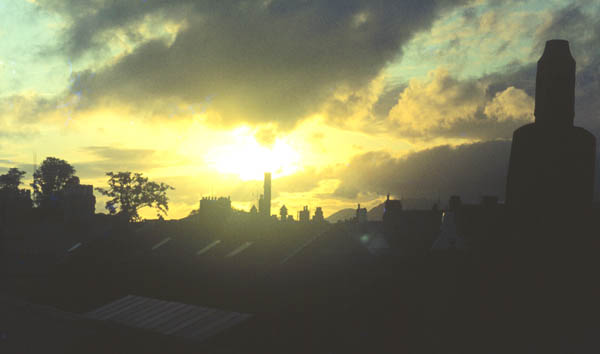
This sunrise over the chimney pots is from our kitchen window.
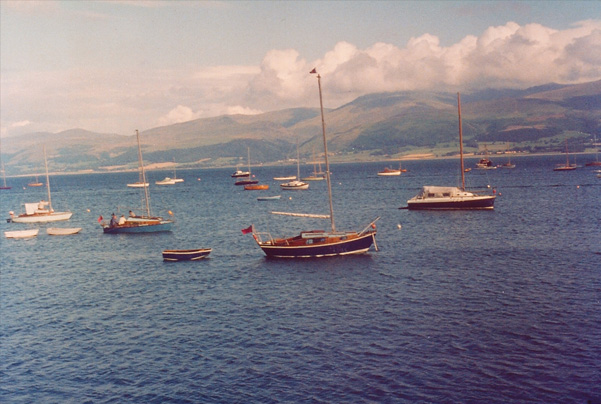
High Tide
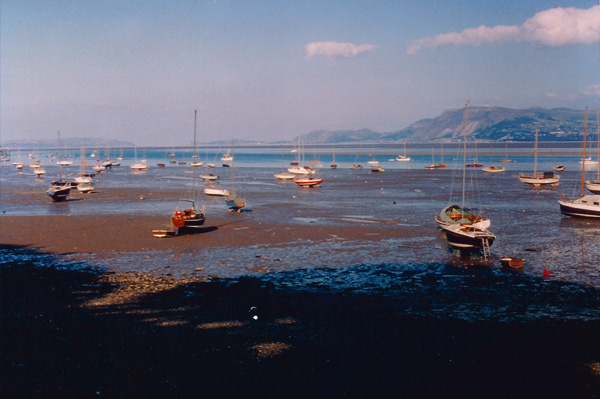
Low Tide
This sequence is one that we found amusing - the beautiful boats riding on the water of the Menai Strait at Beaumaris at high tide, and then sitting on the mud flats six hours later. The tide at Beaumaris was surprsingly high, about eight feet.
| Rainbow over Beaumaris |
| Bangor and the University |
1966